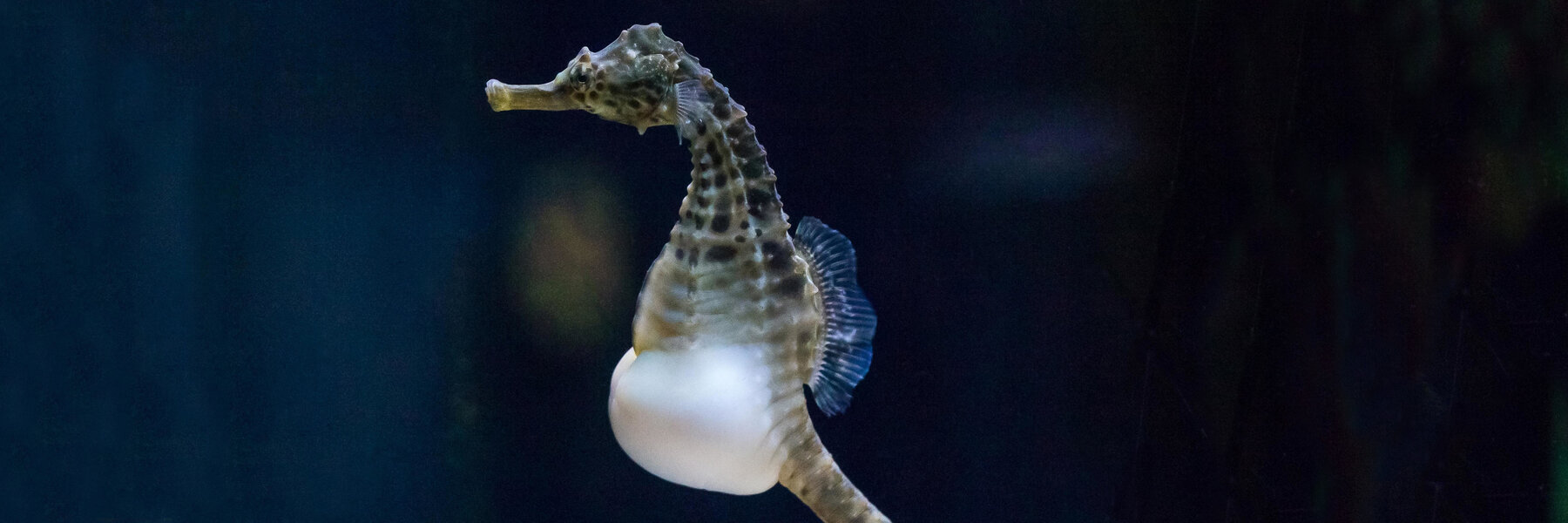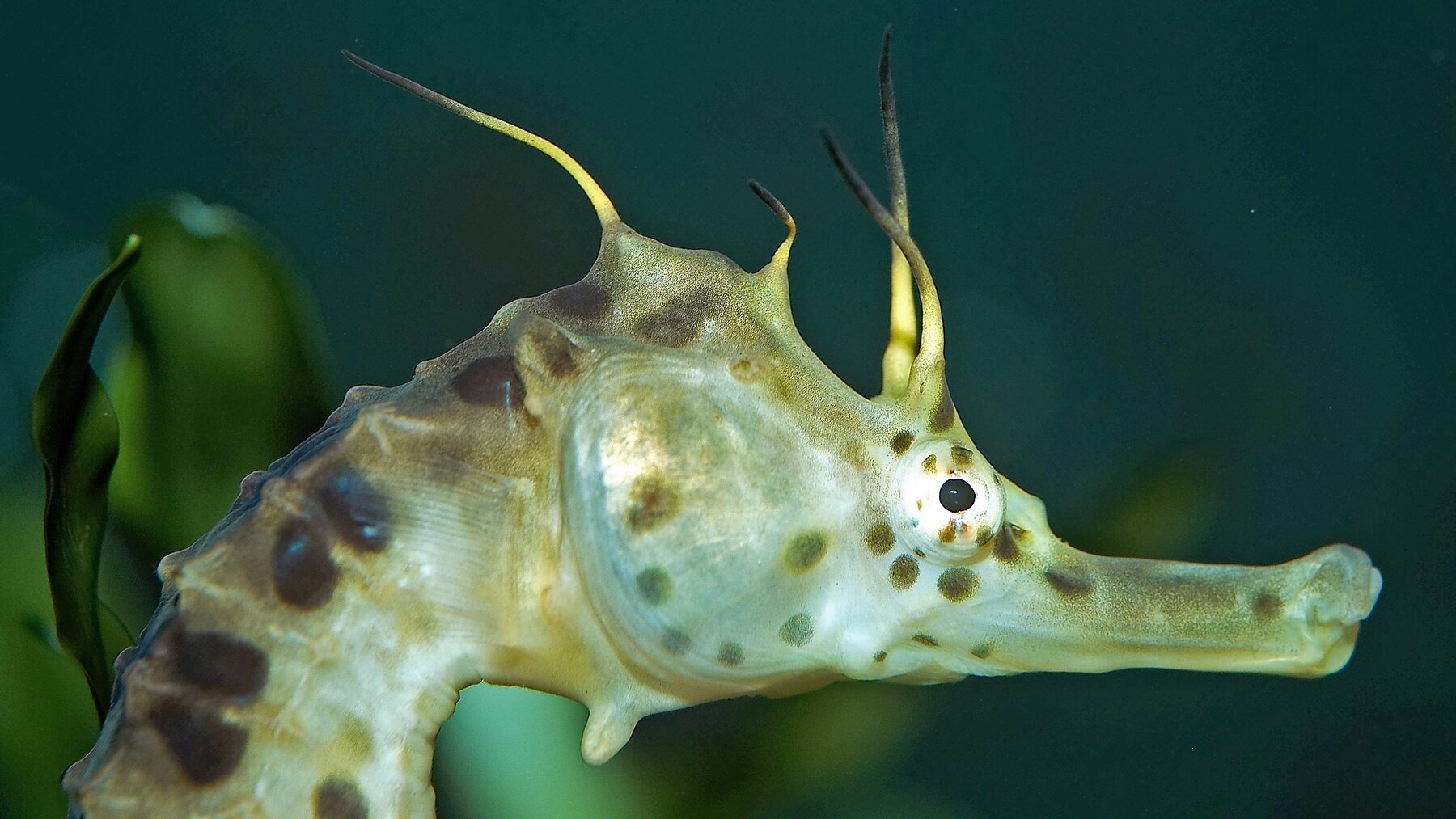
Big-belly Seahorses
Hippocampus abdominalis
Big-belly Seahorses, which are also known as pot-bellied seahorses, grow to a maximum length of 35 cm. Their average length of about 18 to 28 cm makes them the largest seahorse species in the world. Not only their heavily developed body and the two horns on their head are typical of these creatures, the colourful body colouration, ranging from brown, greyish-yellow, orange to white, is also characteristic.
What you should know about big-belly seahorses
As with any seahorse species, the body of the big-belly seahorse is also covered with a ribbed bony skin armour. Except for the belly, its body is dotted with numerous dark spots and its tail is streaked with dark stripes. Its fully flexible tail, which can be wound in or out, is wonderful for hooking on grasses or clasping other seahorses.
Characteristics
- Origin
Australia, New Zealand, South Pacific, West Pacific
- Habitat
Low flow seabed
- Diet
Marine plankton, especially small crustaceans
- Status
least concern
- Size
max. 35 cm
- Weight
over 35g
- Gestation period
approx. 1 month
- Achievable age
approx. 6 years
Threat Categories of IUCN


Like floating mythical creatures
Seahorses have a fascinating effect on people, not least because of the structure of their body. As they move very slowly through the water, apparently floating, you might think they've escaped from a fantasy story. They, incidentally, use their relatively small dorsal fin for thrust, while two pectoral fins placed behind the head are used as rudders.
Monogamous life down under
Pot-bellied seahorses are most commonly found in the South West Pacific coasts of Australia and New Zealand. As a subtropical species they prefer life in nature with temperatures from 8–24°C and live on sponges or moss between algae and seagrasses at a depth of between two to one hundred metres. They mostly live a monogamous life here, since seahorse couples frequently remain together for their whole lives.
Barely born – surviving independently
The female comes to mate if it is interested. For this purpose, the female presses her stomach against the opening of the male brood pouch and injects approx. 300–500 eggs inside. The male hatches approx 100–300 fully developed 15–16 mm foal into the wild just three weeks after fertilisation of the male – seahorses therefore belong to the 'ovoviviparous' group of animals.
Is it true, that …?
... it is the males of the big-belly seahorses that have the children? Indeed. This is, incidentally, true for all species of seahorses. When a male is looking for a partner, it advertises this using its impressive brightly coloured and oversized brood pouch for the attention of the female. The brood pouch gets it whitish or light yellow colouration by the male pumping it's belly with water in a balloon-like manner.

